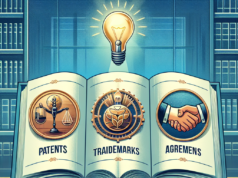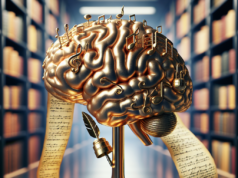
In an era where creativity and innovation are paramount, the concept of fair use has emerged as a pivotal battleground in the ongoing discourse surrounding copyright law. As artists, educators, and content creators navigate the complexities of intellectual property, the fair use doctrine stands as a beacon of hope for those seeking to balance the rights of creators with the public’s need for access to information and culture. This article delves into the intricacies of fair use, tracing its historical evolution, examining landmark legal cases, and exploring the implications of digital media on its interpretation, all while considering the perspectives of creators and the future of this essential legal principle.
Understanding Fair Use: A Fundamental Principle of Copyright Law
Fair use is a legal doctrine that allows for limited use of copyrighted material without obtaining permission from the rights holder. It serves as a critical exception to copyright law, enabling activities such as criticism, comment, news reporting, teaching, scholarship, and research. The principle is rooted in the belief that the public interest is best served when creativity and knowledge can be shared and built upon. Fair use is not a blanket permission but rather a nuanced analysis that considers factors such as the purpose of use, the nature of the copyrighted work, the amount used, and the effect on the market value of the original work. This multifaceted approach aims to strike a balance between protecting the rights of creators and fostering an environment conducive to innovation and cultural exchange.
The Historical Context: How Fair Use Evolved Over Time
The origins of fair use can be traced back to the early 18th century, with the Statute of Anne in England, which laid the groundwork for modern copyright law. However, it was not until the late 20th century that the fair use doctrine began to take shape in the United States. The 1976 Copyright Act formally codified fair use, providing a legal framework for its application. Over the years, the doctrine has evolved in response to societal changes, technological advancements, and shifts in cultural norms. The rise of the internet and digital media has further complicated the landscape, prompting courts and lawmakers to reconsider the boundaries of fair use in light of new forms of expression and distribution.
Key Legal Cases That Shaped the Fair Use Doctrine
Several landmark legal cases have significantly influenced the interpretation and application of fair use. One of the most notable is the 1984 case of Campbell v. Acuff-Rose Music, Inc., where the U.S. Supreme Court ruled that a parody of a copyrighted song constituted fair use, emphasizing the importance of transformative use. Another pivotal case is Sony Corp. of America v. Universal City Studios, Inc. (1984), which established that time-shifting—recording television shows for later viewing—was a fair use practice. These cases, among others, have helped to clarify the parameters of fair use, illustrating that the doctrine is not static but rather adaptable to the evolving landscape of creative expression.
The Impact of Digital Media on Fair Use Interpretations
The advent of digital media has profoundly impacted the fair use doctrine, presenting both challenges and opportunities for creators. The ease of copying and distributing digital content has led to increased scrutiny of fair use claims, as copyright holders seek to protect their works in an increasingly interconnected world. Social media platforms, streaming services, and user-generated content have blurred the lines between original creation and derivative works, prompting courts to grapple with how traditional fair use principles apply in this new context. As a result, the interpretation of fair use has become more complex, necessitating a careful analysis of how digital technologies influence the balance between copyright protection and creative freedom.
Perspectives from Creators: Balancing Rights and Creative Freedom
For many creators, fair use represents a vital tool for artistic expression and innovation. Musicians, filmmakers, educators, and writers often rely on fair use to incorporate existing works into their own, fostering a culture of remixing and collaboration. However, the uncertainty surrounding fair use can also create anxiety among creators, who may fear legal repercussions for using copyrighted material. This tension highlights the need for clearer guidelines and a more robust understanding of fair use within the creative community. Many creators advocate for a more flexible interpretation of fair use that acknowledges the realities of modern media while still respecting the rights of original creators.
Future Directions: Navigating the Fair Use Landscape in a Changing World
As the landscape of copyright law continues to evolve, the future of fair use remains uncertain. Ongoing debates about the implications of artificial intelligence, the rise of deepfakes, and the proliferation of online content challenge traditional notions of authorship and originality. Lawmakers, courts, and creators must work collaboratively to navigate these complexities, ensuring that fair use remains a viable option for fostering creativity and innovation. Additionally, educational initiatives aimed at demystifying fair use for creators and the public can help promote a more informed understanding of this essential legal principle. As society grapples with the implications of digital technology on creative expression, the fair use doctrine will undoubtedly play a crucial role in shaping the future of copyright law.
In conclusion, the fair use doctrine stands at a critical juncture, embodying the tension between protecting intellectual property rights and promoting creative freedom. As we continue to explore the implications of digital media and the evolving nature of creativity, it is essential to uphold the principles of fair use that have allowed artists and innovators to thrive. By fostering a culture of understanding and collaboration, we can ensure that fair use remains a cornerstone of copyright law, empowering future generations of creators to build upon the rich tapestry of human expression.


























